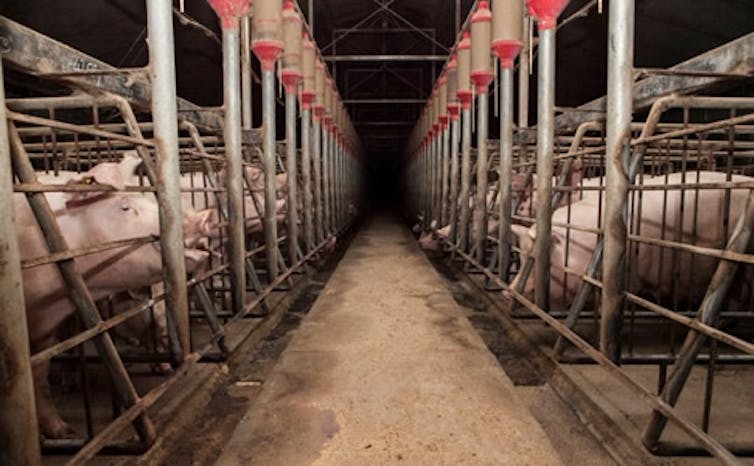In 2018, I wrote a post about how to use IRAC to answer a problem-based question in law courses.
This post builds on the previous discussion (you can read that post here) and looks at how to identify the ‘issue’ when using IRAC. IRAC stands for issue, rule, application and conclusion, and is a well-established method or approach to answering problem-based questions. Therefore, this approach is not appropriate for all assignments you are expected to do in law school. IRAC should only be used when you have a fact scenario and you are asked to advise one or more parties on their legal rights or obligations.
So, you have read the fact scenario. How do you identify the legal issue(s)?
Like most things in law, there is no ‘one’ correct way. These are just my recommendations based on my academic and professional experience. Your lecturer or tutor will have their own recommendations so you should check with them too!
The issue or issues are generally framed as questions. I encourage my students to use issues as a subheading to break up their essays. It is your job to then answer the legal issue, posed as a question, with the rest of the (I)RAC acronym. In other words, you answer the question you have posed by identifying and explaining the relevant legal rule(s), applying the rule(s) to the fact scenario to come to a reasoned conclusion.
One final note: in the steps below I talk mostly about contact law but the same steps apply to any area of law; be it criminal, constitutional or administrative law.
Step 1: do the required readings
I am afraid this is unavoidable. Most trouble identifying the legal issues can be resolved by reading or re-reading the required readings. Which required readings, you ask? This will depend on the course and the fact scenario. The essay question may tell you. For example, I often include a sentence like ‘using only the principles of contract law…’ to tell students to only consider the contract law issues. If your assignment contains a sentence like this, then make sure you follow your lecturer’s advice. Even if you know that the problem could be answered using consumer law, for example, follow the instructions and only look for contract law issues.
If your assignment does not tell you what area of law to focus on and you are not sure what readings you are supposed to read, ask your lecturer or tutor. They are there to help. Personally, I would much prefer students to check if anything is unclear before they hand in their assignment. Don’t be afraid to ask – that is what we are there to do.
Step 2: re-read the problem question
Now that you have a high-level understanding of that area of law, re-read the fact scenario. Keep an open mind and highlight or note anything that reminds you of something you have read in your required readings. Maybe something in the fact scenario reminds you about the facts of a case you read about in your textbook. That is an excellent observation because it is an opportunity for you to use analogical reasoning to argue for or against the application of a legal rule based on the factual similarity or differences between the two cases. Usually, cases referred to in your required readings will only relate to one or two legal issues (for example, was there sufficient consideration in a contract) and, as such, if your hypothetical facts are similar to a case, will be able to identify the relevant issue(s).
Another approach is to identify parts of the fact scenario that seem ‘dodgy’, suspicious or unfair. If someone has been ‘ripped off’ or taken advantage of there is probably a legal issue there.
Step 3: what is the legal principle or area of law at the crux of the issue?
Hopefully, by this stage, you will have ‘rough’ legal issue that needs further refinement. Your legal issue might be something like ‘Is Barry bound by the contract?’ or ‘Is the contract enforceable?’
These are too broad. So, the next step is to dig deeper and narrow down the legal issue(s) until you can’t get any more narrow. In some cases, this may mean your one ‘rough’ legal issue has to be split into multiple legal issues. For example, in the second example above, there may be an issue about the capacity to contract and another issue about consideration.
This is where the required readings are again useful. Find the section of the textbook that discusses these ‘rough’ issues. Are there specific elements or requirements that need to be present? Are one or more of these elements/requirements missing? If so, this helps you to refine the legal issue.
With the capacity to contract example above, you may have identified one of the parties as being a minor (in Australia this is under the age of 18 years) yet they entered into a contract with another party. You are right to have identified that there might be an issue about the minor’s capacity to enter into a legal contract. However, not all contacts will be unenforceable against a minor. There are multiple exceptions. For example, contracts for necessaries will be enforceable against a minor.
Step 4: relate it to your fact scenario
Now, refer back to the fact scenario. Continuing with the previous example, you see that the contract in the fact scenario is for designer clothes. So, in this case, the legal issue is really about whether designer clothes are a necessary, and therefore enforceable, or a luxury, and therefore not enforceable. Rather than ask ‘Is the contract enforceable?’ a better legal issue would ask ‘Is the contact against Jack enforceable as a contract for necessaries?’
This level of specificity is important for two reasons. First, it communicates to the marker exactly what you are focussing on. There are potentially many reasons why a contract may not be valid. By framing the issue around the contract for necessaries you are telling the marker you understand the law of contracts well-enough to exclude irrelevant material. Any other issues will be dealt with separately. Second, when your legal issue is narrow and focused you are more likely to address the issue. As previously mentioned, there are many reasons why a contract may not be enforceable which have nothing to do with the capacity to contract. The risk with keeping the legal issue very broad is that you may identify some but not all of the relevant rules, which will affect the analysis in the ‘application’ section. If there are other reasons why the contract may not be enforceable, then these need to be considered separately.
How many legal issues?
Follow the above steps until there are no more issues you can see in the fact scenario. Due to the word count, you may not include all legal issues in your assignment. But, in your first draft, it is important that you follow the IRAC process for each legal issue you identify. You may then realise what you thought was an issue is not really an issue and can safely be discarded. Or, two issues are very similar and can be safely combined. Or, worse case, you have to exclude one or more legal issues you have identified. In this case, it is best to speak with your lecturer or tutor and ask for their advice. But, generally speaking, if you have identified two issues relating to contracts for necessaries that cannot safely be combined and there are other legal issues you need to discuss for the first time, you have already demonstrated your understanding on contracts for necessaries and so it is best to discuss the other issue.
Conclusion
I hope you have found this helpful! If you have any questions, please post them below. I will do my best to answer them.









